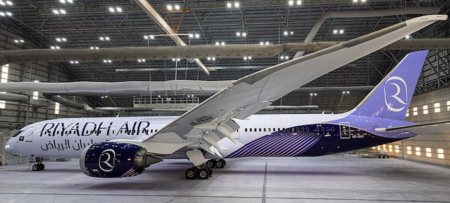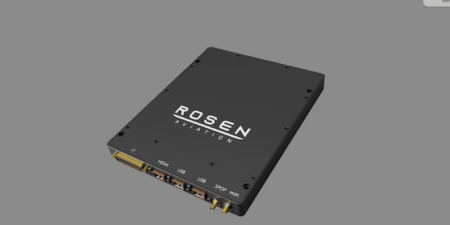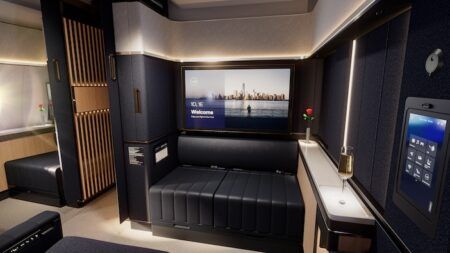The cabin experience may become quite different in the near future, if a trial of virtual reality (VR) IFE headsets by Australian carrier Qantas receives a positive passenger response. However, some industry experts are skeptical about the suitability of VR technology in the cabin environment.
As part of a three-month trial, beginning in mid-March, first class passengers on select Qantas A380 flights between Australia and Los Angeles (a route used for Qantas A380 IFEC trials in March 2012) will be given the option of using a Samsung Gear VR headset, which immerses the wearer in a 360° interactive 3D experience. This project is unrelated to Samsung’s entry into the IFEC world through a tie-up with Boeing, as announced in October 2012.
Users can choose to immerse themselves in the latest blockbuster movies (the headsets are paired to a smartphone, not the eX2 IFE system), or in some new and bespoke Qantas-commissioned content, including virtual tours of Qantas lounges around the world, and destination guides (including a special 3D experience of Australia’s Kakadu National Park, created by Jaunt). Armchair thrillseekers will also enjoy being able to view their takeoff and landing as if they are out on the wing. You can see the technology in action HERE.
Right: As well as onboard A380s, a number of headsets will also be made available to customers in the Sydney and Melbourne International First Lounges in mid-February so frequent flyers can familarize themselves with the technology, and even indulge in a virtual tour of the onboard environment before their aircraft even arrives.
BUT WAIT A SECOND
New technology always sounds great, but it isn’t always ideal for the cabin environment. A few potential issues with the headsets that spring to mind are whether immersed passengers will be aware of safety issues and announcements (though in saying that, most amenity kits contain eyeshades and earplugs), potential annoyance to non-VR passengers as their immersed neighbors move their heads around to explore virtual worlds, and service issues (crew have a hard enough time serving people wearing headphones).
We asked some IFE technology experts for their views on the use of VR headsets in the cabin, and while some feedback was positive, some suggested there could be problems – even that passengers could become queasy!
THE REALITY OF THE VIRTUAL REALITY
According to Steve Sizelove from the corporate strategic innovations department at Panasonic Avionics (pictured left), “Panasonic is continuing to evaluate VR technologies for technical capabilities as well as market applicability”, adding that VR headsets “offer compelling possibilities for uses related to gaming, social networking and more.”
However, Sizelove went on to say that, “Mainstream adoption in our market doesn’t appear likely at the moment as the experience – while incredible – can also be disorienting, fatiguing and overwhelming for many. When coupled with a moving platform like an aircraft, we are concerned that these affects could easily lead to unpleasant experiences such as motion sickness and headaches. We believe that more research is required here, and we will continue to explore and identify tangential things that could be relevant for our market as a whole instead of the VR goggles.”
Another IFE expert, Brett Bleacher (right), is director of advanced technologies and R&D at Thales Avionics IFE, and he has conducted extensive research into the use of VR headsets in IFE. However, he told Aircraft Interiors International that he has found “the problem is the delay factor between what you feel and what you see. NASA has been looking at VR technology for astronauts, to entertain them and help them study, but they have found that if the body doesn’t feel what it sees, then you get the side effects. It’s kind of like 3D, when you can get nausea, headache, eye strain and feel sick as your body is not reacting to what you’re seeing. Also, you can only wear VR headsets for a short while until they become uncomfortable.”
A third point of view comes courtesy of Dr Jörg Liebe, chief information officer at Lufthansa Systems (left). Liebe is a little more confident about using the technology in IFE, stating that it “may be one of the ways to overcome some of the physical limitations of the aircraft cabin with regard to viewing angle, screen size, and distance from the screen. Wearable technology, like VR headsets, holds a lot of potential in the future for IFE. While there are issues about how to address passengers wearing VR headsets – there is no difference between having headsets as art of the IFE system and passengers who already wear such headsets as personal entertainment devices during flights. Again, once VR goggles become a widespread consumer feature, they are going to be available within IFE systems – delivering information and content as well as giving options to passengers utilizing the headsets.”
We eagerly await the results of the trial, to see what passengers really think of the technology – and how they feel after using it. But the big question is: when Qantas first class passengers have a beautiful cabin and suite, designed by Marc Newson, fantastic service and a 17in IFE display, why would they want to leave that reality to enter a virtual world?




